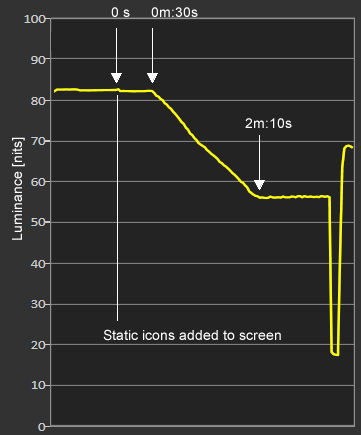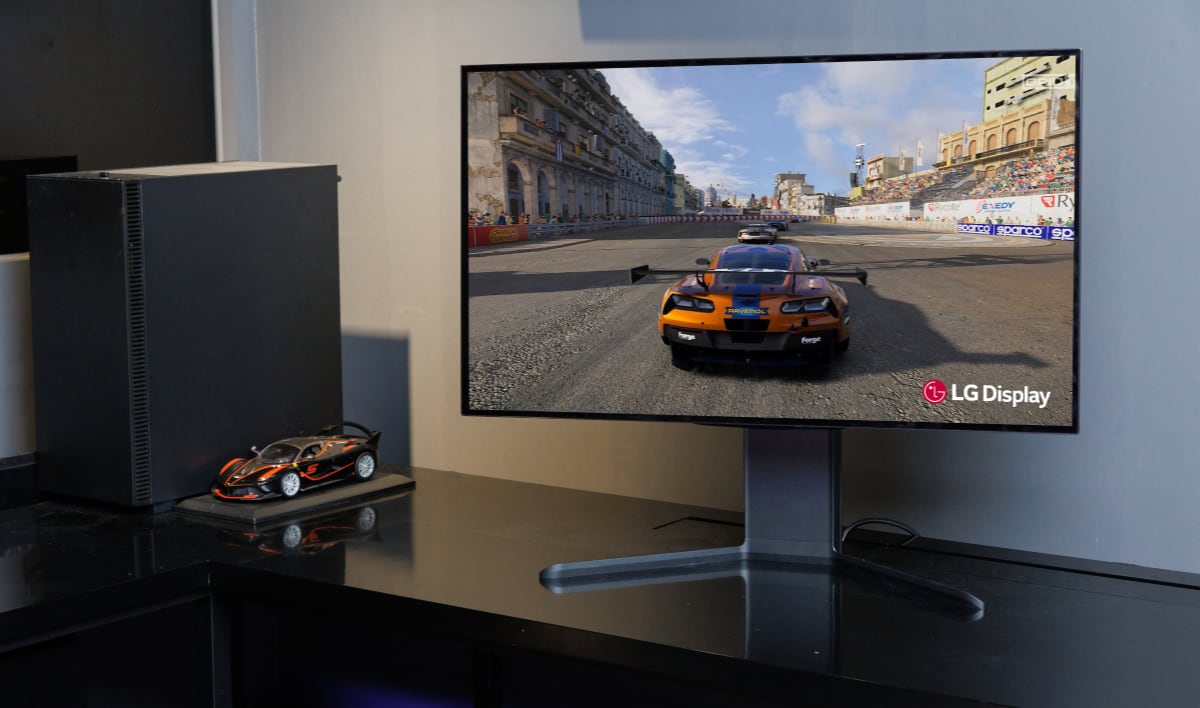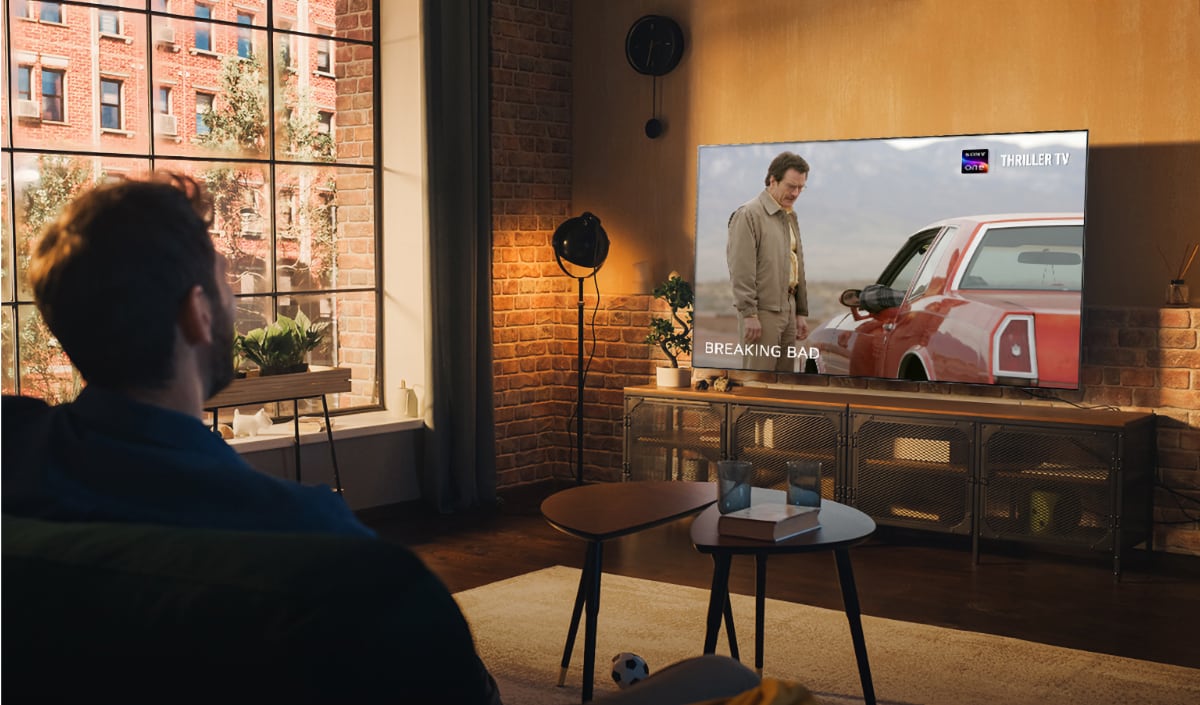Sony says that the A1 and AF8/A8F models, after the latest firmware, now employ the same dimming algorithm for improved performance. FlatpanelsHD’s measurements document how the dimming algorithm works.
Sony OLED dimming case
Frustrated Sony OLED owners have been complaining about persistent dimming issues whenever static elements (gameplay HUD, scoreboard) are present in the picture. The problem was introduced with a firmware update more than half a year ago in the US and later in Europe. In July 2018, Sony publicly acknowledged the problem and promised to fix it.
The latest firmware seems to have alleviated the problem for many owners of the A1 model, but some owners maintain that dimming is still happening in some form or another, mainly during sports or gaming. Sony has sent FlatpanelsHD a statement, explaining that the latest firmware update has streamlined how the dimming algorithm works in A1 and AF8/A8F. It should now be identical.
- “Thank you very much for turning our attention again to the reports of the Sony OLED dimming issues. We are aware that the dimming algorithm to keep product reliability on the A1 introduced via the v6.2858 firmware upgrade in some use cases may have appeared too severe as reported by some of our customers. As part of the firmware upgrade v6.5629 we have included a fix that unifies the A1 and AF8 dimming algorithms, so in the same viewing conditions the former should perform exactly the same as the latter,” Sony Europe said in a written statement to FlatpanelsHD.
The company added that the firmware meant to improve dimming behavior is rolling out gradually so it may not have reached all affected Sony OLED TVs yet.
- “Please note that the v6.5629 firmware upgrade has been rolling out gradually since September 5th and all users will receive the update via OTA by the end of September, however of course there is also the possibility to have the upgrade downloaded from our customer services site and installed via a USB stick. Our internal research has not identified any problems with the AF8’s dimming algorithm, however having seen your reports we are keen to investigate this topic further.”
Sony concluded by emphasizing that it will continue to research reported issues. FlatpanelsHD will be following up if there are new developments in the case.
- “Our intention is to have the reported issues properly researched and resolved for the benefit of our customers.”
Documenting how the dimming algorithm works
Sony has not detailing how the current dimming algorithm in A1 and AF8/A8F works. FlatpanelsHD has therefore been conducting tests and measurements to document how the algorithm behaves.
First scenario (user interface)
The first scenario involves Apple TV 4K’s user interface (in HDR). By alternating between two icons on the home screen we ensured that Apple TV itself was not dimming its interface, in order to focus on the behavior of Sony AF8. We measured on a grey patch in the image.
You should focus on the ‘0 second’ mark in the graph and onwards. It takes 30 seconds before the dimming algorithm reacts to static elements in the picture, after which it gradually and slowly starts to dim. The large drop, and following spike, in brightness that you see towards the very end is Apple TV’s built-in user interface dimming mechanism.
Second scenario (football)
Next, we turned our attention to a football match (forced into HDR viewing mode) by measuring a static scoreboard with the TV set to ‘Movie’ mode.
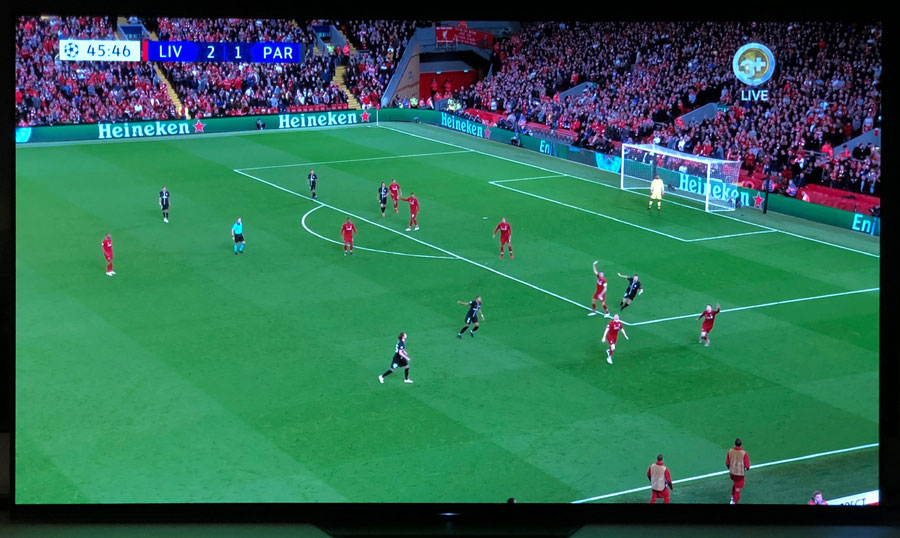
The graph shows that, initially, brightness drops to around 45 nits after 2 minutes without a replay cutscene during the game (we started measuring after the 2 minutes). After the replay cutscene, brightness jumps to around 75 nits. All of the big drops are cutscenes and the sudden peaks after cutscenes are caused by fly-over graphics. Towards the end, you can see the onset of dimming from around 75 nits towards 45 nits (but interrupted by replay cutscene). It took approximately one minute. The scoreboard did not cover the sensor 100%, which is why you see some mild fluctuations in brightness througout the graph.
Note that the x-axis (time) is not identical for the two graphs.
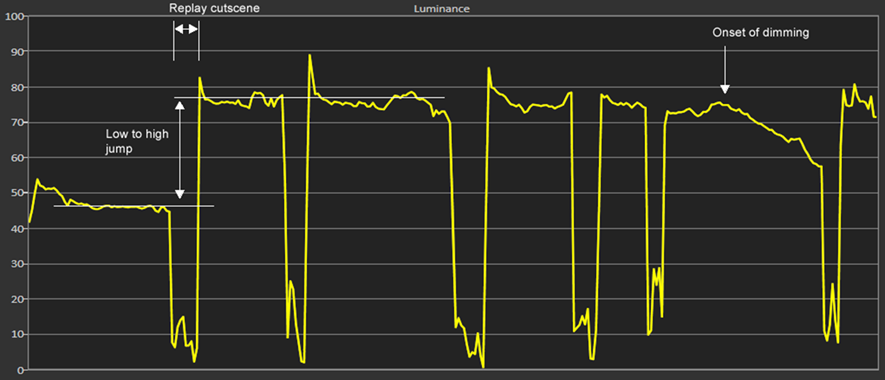
This dimming behavior may also occur for other types of content with static elements (for more than 30s), for example gaming, but it will ultimately depend on your viewing patterns. We have not been able to determine exactly how large/small the static element must be in order to trigger the dimming algorithm. The effect was almost imperceptible to the naked eye but our real-time measurements allowed us to observe how the algorithm works.
Based on our tests, we believe that most viewers will only rarely, or never, notice this level of dimming behavior but specific use cases can trigger it. We encourage Sony to give affected users more choice by including an option to deactivate it.


